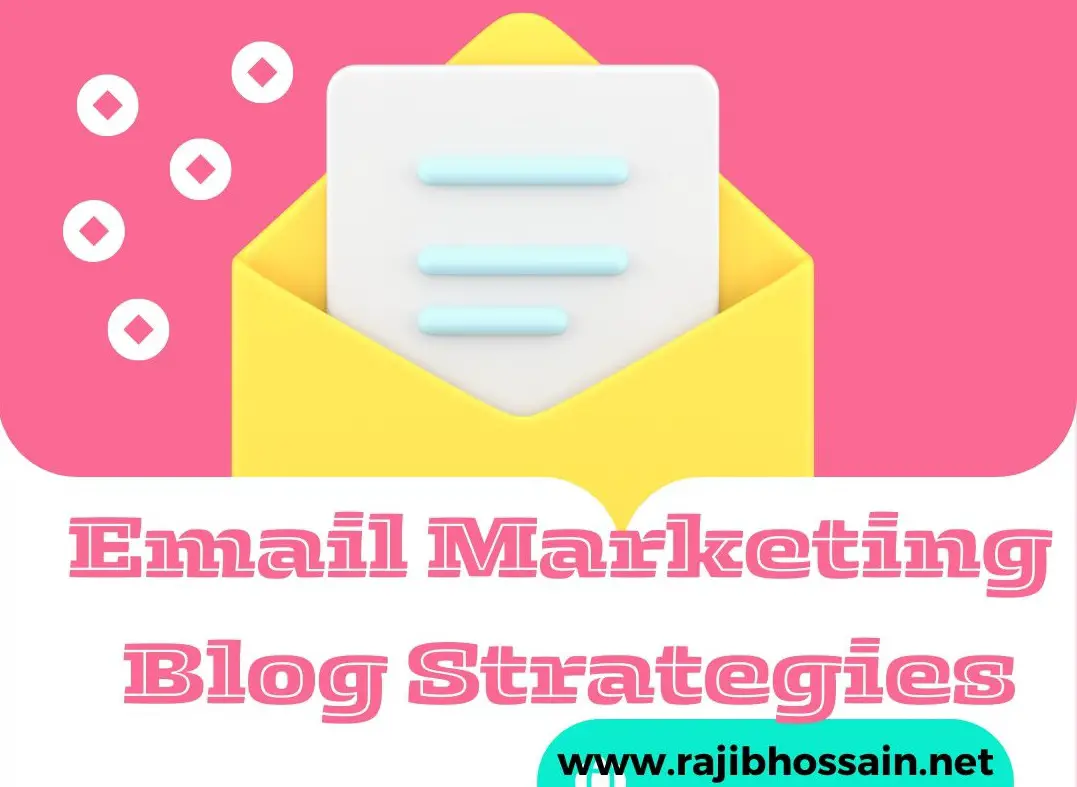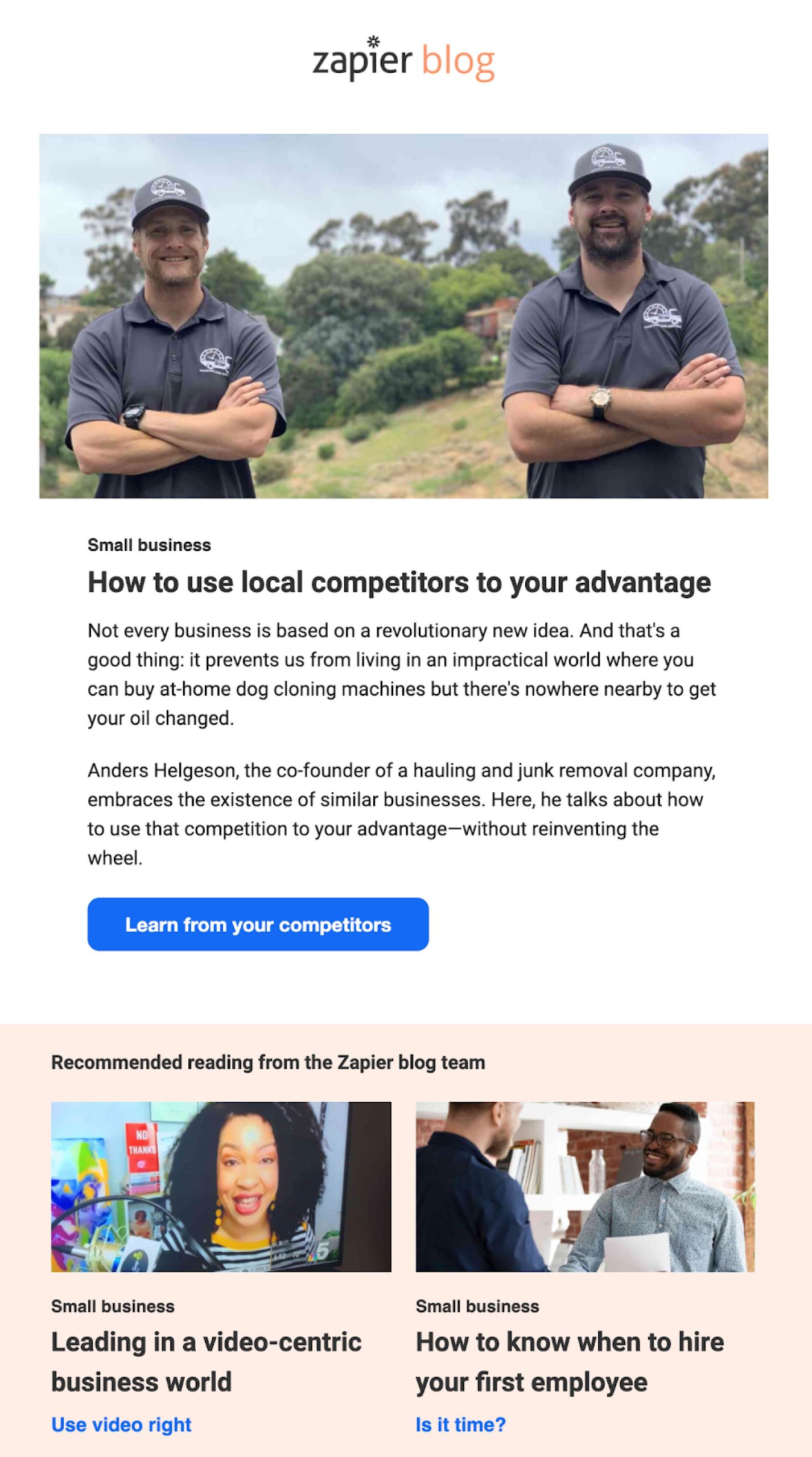Introduction
Email marketing remains one of the most effective digital marketing strategies. It offers high ROI and direct customer engagement.

Email marketing allows businesses to connect directly with their audience, delivering personalized content straight to their inbox. This method not only fosters stronger customer relationships but also drives conversions more effectively than many other channels. By segmenting your audience and crafting targeted messages, you can ensure that your emails resonate with recipients.
Consistent email campaigns keep your brand top-of-mind and provide valuable insights through analytics. Leveraging these insights helps refine strategies and improve overall performance. Whether you’re promoting new products, sharing updates, or nurturing leads, email marketing is a powerful tool in your digital arsenal.
The Power Of Email Marketing
Email marketing is a powerful tool for any business. It helps you reach your audience directly. With the right strategy, email marketing can boost your sales and brand awareness.
The Resurgence In Email Usage
More people are using email now than ever before. Social media is popular, but email remains strong. People check their emails daily. This makes email a great way to connect with customers.
Here are some statistics to show the rise in email usage:
| Year | Number of Email Users (in billions) |
|---|---|
| 2020 | 3.9 |
| 2021 | 4.0 |
| 2022 | 4.1 |
With more users, email marketing has a huge potential. Businesses can tap into this growing audience.
Conversion Rates And Roi Potentials
Email marketing offers high conversion rates. You can track your campaigns and see results. Emails get more clicks than social media posts. This leads to better conversions.
Here are some benefits of email marketing:
- Personalized content
- Targeted audience
- Measurable results
Businesses also see a high return on investment (ROI). For every $1 spent, you can earn up to $42. This makes email marketing a cost-effective choice.
To sum up, email marketing is powerful. It reaches a large audience, converts well, and offers high ROI.

Building A Strong Subscriber List
A strong subscriber list is essential for effective email marketing. It leads to higher engagement rates and better conversions. But building this list requires strategic planning and ongoing effort. Below are key strategies to help you build and maintain a robust subscriber list.
Opt-in Strategies
Opt-in strategies are crucial to grow your email list. You must offer value to encourage sign-ups. Here are some effective opt-in strategies:
- Offer Incentives: Provide discounts, free eBooks, or exclusive content.
- Use Pop-Ups: Time your pop-ups to appear at the right moment.
- Leverage Social Media: Promote your sign-up forms on social platforms.
- Embed Sign-Up Forms: Place forms on high-traffic pages of your website.
Offering incentives can be a powerful motivator. Free resources, special discounts, and exclusive content can attract more subscribers. Pop-ups can also be effective if timed well. Place sign-up forms on high-traffic pages and social media to reach a broader audience.
Maintaining List Hygiene
Maintaining list hygiene ensures your email list remains effective. An updated and clean list improves deliverability and engagement. Here are some ways to maintain list hygiene:
| Action | Purpose |
|---|---|
| Remove Inactive Subscribers | Improve open rates and engagement |
| Validate Email Addresses | Reduce bounce rates and spam complaints |
| Segment Your List | Send targeted and relevant content |
Regularly removing inactive subscribers helps improve your open rates. Validating email addresses reduces bounce rates and spam complaints. Segmenting your list allows you to send more targeted content. This can lead to higher engagement and conversion rates.
An effective email marketing strategy starts with a strong subscriber list. Use opt-in strategies to grow your list and maintain list hygiene to keep it effective. Implement these tips to see better results in your email marketing efforts.
Crafting Compelling Subject Lines
Subject lines are the first thing your audience sees. They decide whether an email is opened or ignored. Crafting compelling subject lines is crucial for email marketing success.
Personalization Techniques
Personalization can significantly boost your email open rates. Use the recipient’s name in the subject line. For example: “John, don’t miss our special offer!”
Personalize based on past purchases or interests. For instance: “Exclusive deals on gadgets you love!”
Personalization makes the recipient feel valued and increases engagement.
A/b Testing For Better Engagement
A/B testing helps identify the most effective subject lines. Create two different subject lines for the same email. Send each version to a small group of your audience. Measure which subject line gets more opens. Use the winning subject line for the rest of your audience.
| Version | Subject Line | Open Rate |
|---|---|---|
| A | “Don’t miss out on our sale!” | 20% |
| B | “Huge discounts just for you!” | 25% |
In the example above, Version B has a higher open rate. Use Version B for the remaining audience.
- Test different subject line lengths.
- Experiment with emojis.
- Try urgency phrases like “Limited time offer!”
Regular A/B testing refines your email strategy. It ensures higher engagement and better results.
Designing Your Email For Maximum Impact
Creating an email that grabs attention is crucial. Good design ensures your message stands out. Let’s explore ways to design impactful emails.
Responsive Email Templates
Emails must look great on all devices. Responsive templates adjust to different screens. This makes your email readable everywhere.
- Use mobile-friendly designs.
- Ensure text is readable on small screens.
- Images should resize correctly.
Responsive templates increase engagement. Readers will appreciate the easy reading experience.
Visual Hierarchy In Email Layouts
Visual hierarchy guides the reader. It shows what is important. Use different sizes and colors to highlight key points.
For example:
| Element | Importance |
|---|---|
| Headline | High |
| Subheadline | Medium |
| Body Text | Low |
Make sure the headline is bold and large. The body text should be smaller but clear. This helps readers scan the email quickly.
Segmentation: Tailoring The Message
Email marketing is an effective tool. To maximize its potential, segment your audience. Segmentation means dividing your email list into smaller groups. Each group gets a unique message. This increases engagement and conversion rates. Segmentation can be based on various factors. Below are two key types of segmentation.
Demographic Segmentation
Demographic segmentation divides your audience by age, gender, income, and location. This helps you send more relevant emails. For example, an email about kids’ toys should target parents. Seniors might prefer emails about health products.
| Demographic Factor | Example |
|---|---|
| Age | 20-30 years, 30-40 years |
| Gender | Male, Female |
| Income | Low, Medium, High |
| Location | Urban, Rural |
Use demographic data to personalize your emails. This increases the chance of conversion.
Behavioral Segmentation
Behavioral segmentation looks at user actions. This includes purchase history, website visits, and email interactions. It helps you understand what users want. You can then send targeted emails based on their behavior.
- Purchase history
- Website visits
- Email opens and clicks
- Cart abandonment
For example, send a follow-up email if a user abandons their cart. If a user clicks on a specific product, send them more information about it. Behavioral segmentation helps you engage users effectively.
The Role Of Content In Email Marketing
Email marketing is a powerful tool. Success depends on the content you share. Good content can engage readers and drive conversions.
Educational Content
Educational content provides value. It helps your audience learn something new. This builds trust and keeps subscribers engaged.
Examples of educational content include:
- How-to guides
- Case studies
- Industry insights
- Tips and tricks
Educational content should be clear and concise. Use simple words and short sentences. Ensure your message is easy to understand.
Promotional Content
Promotional content drives sales. It informs your audience about products or services. It includes offers and discounts.
Examples of promotional content include:
- Special offers
- Discount codes
- New product announcements
- Limited-time deals
Promotional content should be engaging and to the point. Highlight the benefits of your offers. Use clear calls to action.
Balancing educational and promotional content is key. This keeps your audience engaged and drives conversions.
Automation And Trigger-based Emails
Email marketing automation saves time and boosts engagement. Trigger-based emails respond to user actions. This ensures timely, relevant communication. Below, we explore key automation strategies.
Welcome Series Automation
A welcome series greets new subscribers. It sets the tone for future interactions. Here’s how to do it:
- Send an immediate welcome email.
- Follow up with brand values and story.
- Offer a special discount or gift.
Welcome series emails create a strong first impression. They help build trust and engagement.
Cart Abandonment Strategies
Cart abandonment is a challenge. Automation can help recover lost sales. Here’s a strategy:
- Send a reminder email within an hour.
- Include images of abandoned products.
- Offer a discount or free shipping.
These steps can bring customers back. They boost conversion rates and revenue.

Analyzing And Optimizing Email Campaigns
Analyzing and optimizing email campaigns is vital for successful email marketing. It helps you understand what works and what doesn’t. This section will guide you on key performance indicators and iterative improvement based on data.
Key Performance Indicators
Key Performance Indicators (KPIs) help measure the success of your email campaigns. Here are some important KPIs to track:
- Open Rate: The percentage of recipients who open your email. High open rates show strong subject lines and sender reputation.
- Click-Through Rate (CTR): The percentage of recipients who click on links. It shows the effectiveness of your email content and call-to-actions.
- Conversion Rate: The percentage of recipients who complete a desired action. This KPI measures the success of your email in driving actions.
- Bounce Rate: The percentage of emails that could not be delivered. A high bounce rate can harm your sender reputation.
- Unsubscribe Rate: The percentage of recipients who unsubscribe. This indicates the relevance and value of your emails to your audience.
Iterative Improvement Based On Data
Iterative improvement involves making small changes and testing them. This process helps refine your email campaigns over time. Here’s how to do it:
- Analyze Data: Collect data from your email campaigns. Look at your KPIs to understand what works.
- Identify Areas for Improvement: Find patterns in the data. Identify areas where your campaigns can improve.
- Test Changes: Make small changes to your email campaigns. Test different subject lines, content, and layouts.
- Measure Results: Compare the results of your changes with previous data. Look at the impact on your KPIs.
- Repeat the Process: Continue to make changes and measure results. This iterative process helps optimize your email campaigns.
| KPI | What It Measures | Why It’s Important |
|---|---|---|
| Open Rate | Percentage of opened emails | Shows subject line effectiveness |
| Click-Through Rate (CTR) | Percentage of clicked links | Indicates content engagement |
| Conversion Rate | Percentage of completed actions | Measures campaign success |
| Bounce Rate | Percentage of undelivered emails | Affects sender reputation |
| Unsubscribe Rate | Percentage of unsubscribes | Indicates email relevance |
Staying Compliant With Regulations
Email marketing laws protect consumers’ privacy and reduce spam. Staying compliant with these regulations is crucial. This section will guide you on how to follow these rules. Learn about GDPR and CAN-SPAM. Understand best practices for email consent.
Understanding Gdpr And Can-spam
GDPR stands for General Data Protection Regulation. It applies to all EU citizens. GDPR requires businesses to protect personal data. Companies must get clear consent before collecting data. They must also allow users to withdraw consent easily.
CAN-SPAM is a US law. It stands for Controlling the Assault of Non-Solicited Pornography And Marketing. CAN-SPAM applies to commercial emails. It requires clear identification of the sender. Unsubscribe options must be clear and easy to use.
| GDPR | CAN-SPAM |
|---|---|
| Applies to EU citizens | Applies to commercial emails in the US |
| Requires clear consent for data collection | Requires clear sender identification |
| Allows easy withdrawal of consent | Requires easy unsubscribe option |
Best Practices For Email Consent
Follow best practices for email consent to stay compliant. Use clear and simple language. Avoid jargon. Make it easy for users to understand what they are agreeing to.
- Use Double Opt-In: Send a confirmation email to new subscribers. This ensures they really want to join.
- Provide Clear Information: Explain what users will get by subscribing. Include details like frequency and content type.
- Offer Easy Opt-Out: Make it simple for users to unsubscribe. Include an unsubscribe link in every email.
By following these practices, you can build trust with your audience. You will also stay compliant with email marketing laws.
Future Trends In Email Marketing
The landscape of email marketing evolves rapidly. Businesses must stay ahead of trends to stay competitive. Let’s explore some future trends in email marketing.
Integration With Ai Technologies
Email marketing is embracing AI technologies. AI can analyze vast amounts of data quickly. This enables businesses to create more effective campaigns.
AI helps in segmenting email lists. It can predict customer behavior and preferences. This leads to more targeted and personalized emails.
AI can also automate email responses. This ensures timely communication with customers. This boosts customer satisfaction and engagement.
Predictive Personalization
Predictive personalization is a game-changer. It uses data to predict customer needs. Businesses can send emails that are relevant to each customer.
Here are some key aspects of predictive personalization:
- Analyzing past behavior to predict future actions
- Creating personalized product recommendations
- Sending tailored content based on individual preferences
This approach increases open rates and conversions. Customers feel valued when they receive relevant content.
| Feature | Benefit |
|---|---|
| AI Integration | Better segmentation and targeting |
| Predictive Personalization | Increased engagement and conversions |

Frequently Asked Questions
What Is An Email Marketing Blog?
An email marketing blog provides tips, strategies, and insights on creating effective email campaigns. It helps businesses engage subscribers and boost conversions.
What Are The 5 Ts Of Email Marketing?
The 5 Ts of email marketing are Targeting, Timing, Testing, Trends, and Tracking. Target the right audience, send at optimal times, test your emails, stay updated with trends, and track performance.
How Do I Promote My Blog Through Email?
Promote your blog by building an email list. Send regular newsletters with engaging content. Include clear calls-to-action and social sharing buttons. Use catchy subject lines to increase open rates. Personalize emails to connect with your audience.
Can You Make Good Money With Email Marketing?
Yes, you can make good money with email marketing. It boosts sales, improves customer retention, and builds brand loyalty. Effective strategies and targeted campaigns are key to success.
Conclusion
Email marketing remains a powerful tool for businesses. It helps build relationships and drives conversions. Implement these strategies for success. Keep your audience engaged with personalized content. Monitor your campaigns and adjust as needed. Stay consistent and watch your business thrive.

